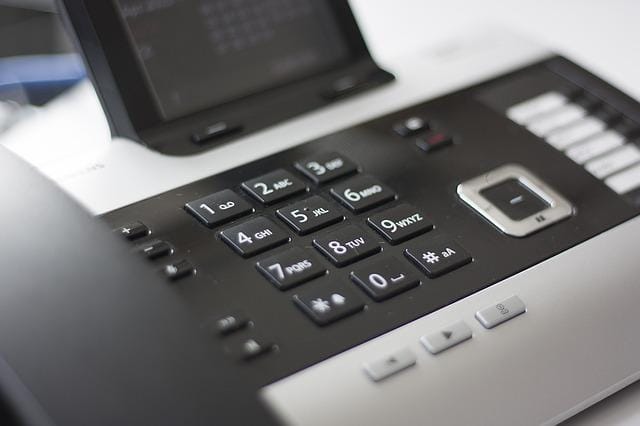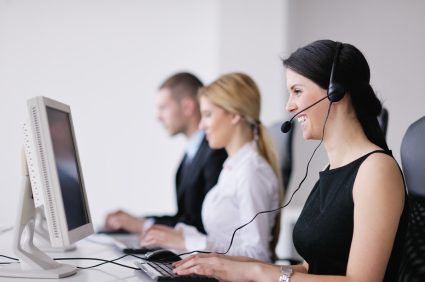All Categories
Featured
Table of Contents
- – What Is The Best Telephone Answering Service Me...
- – What's The Best What Are Call Answering Servic...
- – What Is The Best Professional Call Answering S...
- – Who Has The Best 24/7 Phone Answering - Au-ba...
- – Who Has The Best Your Virtual Receptionist: P...
- – What Is The Best How Much Does An Answering ...
What Is The Best Telephone Answering Service Melbourne Cbd Australia To Buy
This gadget and its successors were created by Sava Jacobson, an electrical engineer with a private consulting organization. While early voice mail utilized magnetic tape innovation, many contemporary devices uses solid state memory storage; some devices utilize a combination of both, with a solid-state circuit for the outgoing message and a cassette for the inbound messages.
"toll conserving" listed below) (virtual telephone answering). This works if the owner is screening calls and does not want to speak to all callers. In any case after going, the calling celebration needs to be informed about the call having actually been addressed (most of the times this starts the charging), either by some remark of the operator, or by some greeting message of the little bit, or resolved to non-human callers (e.
This holds especially for the Little bits with digitally saved greeting messages or for earlier devices (before the rise of microcassettes) with a special unlimited loop tape, different from a 2nd cassette, devoted to recording. There have actually been answer-only devices without any recording capabilities, where the greeting message had to inform callers of a state of present unattainability, or e (answering service).
What's The Best What Are Call Answering Services? - Explained Brand

about accessibility hours. In taping Littles the greeting normally consists of an invitation to leave a message "after the beep". An answering device that utilizes a microcassette to tape-record messages On a dual-cassette answerphone, there is an outgoing cassette, which after the defined variety of rings plays a pre-recorded message to the caller.

Single-cassette answering makers consist of the outgoing message at the start of the tape and incoming messages on the staying area. They initially play the announcement, then fast-forward to the next offered area for recording, then tape-record the caller's message. If there are many previous messages, fast-forwarding through them can trigger a significant delay.
This beep is often described in the greeting message, requesting that the caller leave a message "after the beep". Littles with digital storage for the recorded messages do not show this delay, naturally. A TAD may offer a remote control facility, where the answerphone owner can sound the house number and, by going into a code on the remote telephone's keypad, can listen to tape-recorded messages, or delete them, even when away from house.
What Is The Best Professional Call Answering Services: Everything You ... To Buy Right Now?

Thus the machine increases the number of rings after which it addresses the call (typically by 2, leading to four rings), if no unread messages are currently kept, but responses after the set variety of rings (normally two) if there are unread messages. This allows the owner to discover whether there are messages waiting; if there are none, the owner can hang up the phone on the, e.
Some devices also permit themselves to be from another location triggered, if they have been turned off, by calling and letting the phone ring a specific big number of times (usually 10-15). Some provider abandon calls already after a smaller variety of rings, making remote activation impossible. In the early days of Littles an unique transmitter for DTMF tones (dual-tone multi-frequency signalling) was regionally needed for remote control, because the formerly utilized pulse dialling is not apt to convey proper signalling along an active connection, and the dual-tone multi-frequency signalling was implemented step-by-step.
Any inbound call is not identifiable with regard to these residential or commercial properties in advance of going "off hook" by the terminal equipment. So after going off hook the calls should be switched to proper devices and just the voice-type is right away available to a human, but perhaps, nonetheless should be routed to a LITTLE (e.
Who Has The Best 24/7 Phone Answering - Au-based Operators - Alltel Australia Service?
What if I told you that you do not have to really get your gadget when addressing a consumer call? Another person will. So practical, right? Addressing telephone call does not require somebody to be on the other end of the line. Effective automated phone systems can do the technique simply as efficiently as a live agent and in some cases even better.
An automated answering service or interactive voice reaction system is a phone system that interacts with callers without a live individual on the line - answer phone service. When business use this technology, consumers can get the response to a concern about your service simply by utilizing interactions set up on a pre-programmed call circulation.
Although live operators upgrade the customer service experience, many calls do not need human interaction. A simple documented message or instructions on how a client can obtain a piece of information normally fixes a caller's instant requirement - call answering services. Automated answering services are a simple and effective way to direct incoming calls to the best person.
Who Has The Best Your Virtual Receptionist: Phone Answering Services?
Notification that when you call a business, either for assistance or item inquiry, the first thing you will hear is a pre-recorded voice welcoming and a series of choices like press 1 for client service, press 2 for inquiries, and so on. The pre-recorded alternatives branch out to other choices depending on the consumer's choice.
The phone tree system helps direct callers to the best person or department utilizing the keypad on a cellphone. In some circumstances, callers can use their voices. It's worth noting that auto-attendant choices aren't restricted to the 10 numbers on a phone's keypad. When the caller has chosen their very first alternative, you can develop a multi-level auto-attendant that utilizes sub-menus to direct the caller to the right sort of help.
The caller does not need to interact with a person if the auto-attendant phone system can handle their concern. The automated service can route callers to a staff member if they reach a "dead end" and require help from a live agent. It is costly to work with an operator or executive assistant.
What Is The Best How Much Does An Answering Service Cost In 2023? Out
Automated answering services, on the other hand, are substantially more economical and offer considerable cost savings at an average of $200-$420/month. Even if you do not have dedicated personnel to manage call routing and management, an automatic answering service improves productivity by enabling your group to concentrate on their strengths so they can more effectively invest their time on the phone.
A sales lead routed to customer service is a lost shot. If a customer who has item questions reaches the incorrect department or receives incomplete responses from well-meaning workers who are less trained to deal with a specific type of concern, it can be a cause of disappointment and frustration. An automatic answering system can reduce the variety of misrouted calls, thus assisting your workers make better use of their phone time while maximizing time in their calendar for other jobs.
With Automated Answering Systems, you can develop an individualized experience for both your personnel and your callers. Make a recording of your primary welcoming, and just upgrade it regularly to reflect what is going on in your organization. You can create as lots of departments or menu alternatives as you desire.
Table of Contents
- – What Is The Best Telephone Answering Service Me...
- – What's The Best What Are Call Answering Servic...
- – What Is The Best Professional Call Answering S...
- – Who Has The Best 24/7 Phone Answering - Au-ba...
- – Who Has The Best Your Virtual Receptionist: P...
- – What Is The Best How Much Does An Answering ...
Latest Posts
Renowned Receptionist Service – Melbourne
Premium Call Management Service Near Me
Comprehensive Live Answering Service Near Me
More
Latest Posts
Renowned Receptionist Service – Melbourne
Premium Call Management Service Near Me
Comprehensive Live Answering Service Near Me